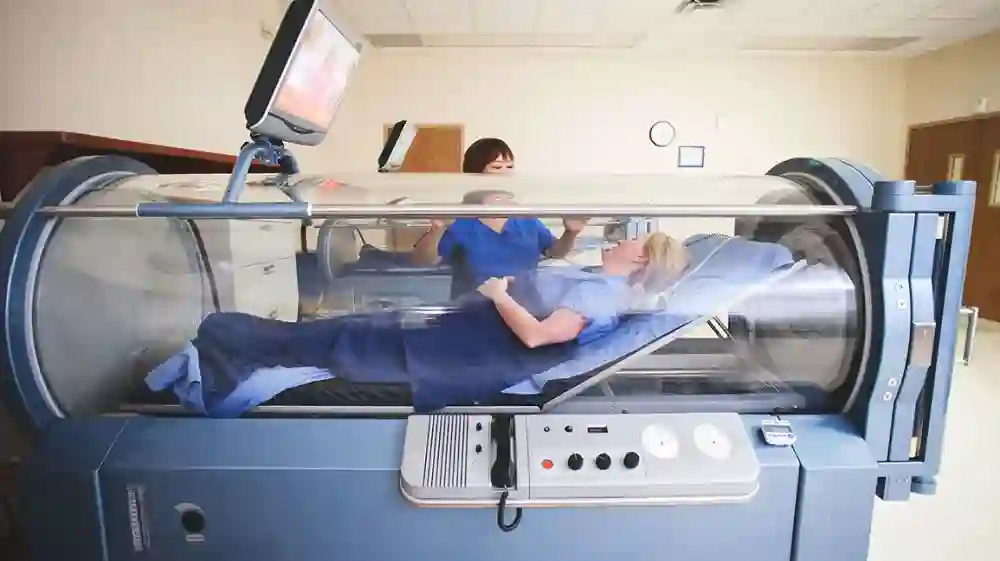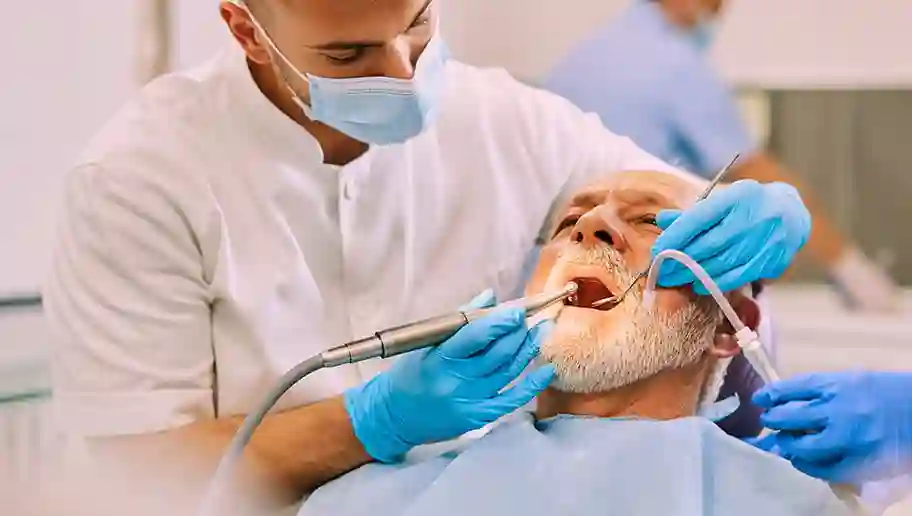Health & Fitness
Exploring the Potential of Hyperbaric Oxygen Therapy in Modern Medicine

Table of Contents:
- Key Takeaways
- Introduction
- How HBOT Works
- The Science Behind HBOT
- Medical Conditions Benefiting from HBOT
- Safety and Risks of HBOT
- Accessibility and Availability of HBOT
- The Role of HBOT in Holistic Health Practices
- Conclusion
Key Takeaways:
- Hyperbaric Oxygen Therapy (HBOT) involves breathing pure oxygen in a pressurized chamber to enhance the body’s natural healing process.
- HBOT is proven beneficial for various medical conditions, particularly infections and compromised blood flow.
- Ongoing studies are unlocking new potentials of HBOT, broadening its scope and applications in healthcare.
Introduction
Hyperbaric Oxygen Therapy (HBOT) harnesses the natural healing power of oxygen, offering diverse applications in medicine. By creating an environment where patients can absorb larger quantities of oxygen, the treatment has gained traction for its capacity to promote recovery and enhance overall healing. Intrigued by the simplicity of utilizing oxygen, a fundamental life element, scientists and medical professionals continue to advance HBOT’s applications, making it a staple in treatment protocols for various health anomalies.
How HBOT Works
The HBOT procedure is conducted within a hyperbaric chamber, an enclosure that can be pressurized to levels exceeding normal atmospheric conditions. As patients breathe within this environment, their bodies can absorb more oxygen, distributed via circulation to organs and tissues. This fosters an optimized healing environment, especially in areas of injury or disease.
The Science Behind HBOT
Scientific exploration reveals that HBOT’s efficacy stems from oxygen’s pivotal role in reducing inflammation, enhancing immune responses, and promoting angiogenesis—forming new blood vessels. Research highlights these physiological effects, which are maximized under the controlled conditions of the therapy, leading to improved outcomes for patients suffering from various health conditions.
Medical Conditions Benefiting from HBOT
One of the notable successes of HBOT is in treating chronic wounds, such as diabetic foot ulcers, where impaired circulation inhibits conventional healing. By delivering a higher oxygen concentration to the affected area, HBOT speeds up the repair process. Beyond wound care, conditions like carbon monoxide poisoning and diving-related decompression sickness are also responsive to HBOT due to oxygen’s ability to outcompete harmful and restore normal bodily function.
Safety and Risks of HBOT
While HBOT has an impressive safety record, it is not devoid of risks. Minor side effects like ear pain due to pressure changes are managed with standard safety protocols. Serious complications are rare but can include oxygen toxicity and barotrauma. Therefore, treatments should always be supervised professionally in certified treatment centers.
Accessibility and Availability of HBOT
Access to HBOT can be limited by geographic location, insurance coverage, and the cost of procuring the high-tech equipment necessary for administering the therapy. Efforts are being made to improve accessibility as its benefits become increasingly recognized.
The Role of HBOT in Holistic Health Practices
Integrating HBOT into a holistic approach to health emphasizes its adaptability. As a complementary treatment, it augments traditional medical care, aligning with the comprehensive health strategies aimed at treating the patient as a whole rather than focusing exclusively on the ailment.
Conclusion
In summary, HBOT is a scientifically based therapy with growing recognition for its efficacy in treating various medical conditions. Its integration into various medical practices testifies to the therapy’s expanding frontier in enhancing patient care. As research progresses, so does the potential for HBOT to become a more prolific treatment within the medical community.
Health & Fitness
What to Do If You’re Injured in a Workplace Accident

Immediate Steps to Follow
After getting hurt, the first thing to do is get help immediately because your health comes first. If it’s a serious injury, dialing emergency services is a must. For minor injuries, you can usually head over to the company’s medical unit or a nearby clinic for help. After getting attention for the injury at work, remember to inform your supervisor or manager immediately. Documenting all the details in case of injuries is crucial and ensuring the report includes a description of how and when the accident happened. This initial action lays the groundwork for any claims or legal matters in the future.Gathering Evidence and Witnesses
Gathering evidence is essential for backing up any assertions one might have to make in a situation like this one, where an accident has occurred. It’s important to capture images of the scene, as they can serve as proof of what transpired there. Where feasible and applicable, also include any tools or circumstances that may have played a part in causing the injury. A thorough record helps build a complete understanding of what happened during the incident.Understanding Rights and Responsibilities
After getting injured at work, it’s crucial to know your rights as an employee to claim compensation and medical benefits under the law of the land where you work. Moreover, acknowledging duties is just as crucial. Workers should adhere to the protocols while submitting requests. Offering the appropriate details guarantees a streamlined procedure. Employers are also key in providing instructions and assistance during this process.Filing a Workers’ Compensation Claim
Initiating a worker’s compensation claim is typically required following an incident at work that leads to an injury situation. This procedure may appear overwhelming initially; however, comprehending the actions can help reduce anxiety. Firstly, assemble all paperwork, such as files and accident documentation. These documents will serve as substantiation for your claim.Seeking Legal Advice
There are times when seeking counsel is necessary, especially in complex situations or conflicts with employers, where professional advice is crucial to safeguard one’s rights and determine the most appropriate course of action. Legal consultants also play a crucial role in guiding individuals through any obstacles that may arise during the compensation process. Their knowledge and assistance can be extremely beneficial when dealing with cases where the employer disputes the claim. Consultation with professionals ensures that someone fights for your rights and best interests.Returning to Work Safely
After starting to recover from an injury or illness and feeling better enough to work, you might start thinking about going to work safely and smoothly by talking openly with your employer about any adjustments or changes needed to avoid any more harm or issues from happening on the job and possibly having your employer provide temporary tasks to help you ease back, into work. Taking on tasks gradually can reduce stress and avoid strain on oneself. It’s important to follow recommendations and adjust workloads accordingly for a return to work. Employers should offer support and create a welcoming atmosphere for their employees.Preventing Future Accidents
To avoid injuries, it’s important to focus on prevention even after an incident occurs at work. Workers can be proactive by taking steps to reduce risks in the future. Participating in safety training programs helps raise awareness and readiness. Knowing how to operate equipment and handle materials can lower the chances of accidents. Employers have a significant role in preventing incidents at work by conducting safety checks and keeping protocols up to date to maintain a safe environment for everyone involved in the workplace environment by fostering a culture of safety that empowers employees to speak up about their concerns.Conclusion
Work-related injuries can feel overwhelming; however, knowing how to react can truly impact situations. Focusing on your well-being and foremost cognizance of your rights are important. Being proactive is crucial in managing these circumstances successfully. Adhering to these recommendations enables individuals to safeguard themselves and promote an environment for everyone at work.Read More latest Posts
- Yotube to wav: Converting YouTube Videos for Professional Audio
- House Party topics that will impress your friends
- Yellow butterfly meaning: The Joyful Symbol of Spiritual Awakening
- Yiff Party: Everything you need to know about this controversial platform
- #TurboGeek.org: Discover the Best Educational Resources for Tech
Health & Fitness
The Benefits of Medication-Assisted Addiction Treatment (MAT)

MAT combines pharmaceutical interventions with counseling and behavioral therapies to treat substance use disorders. This multifaceted approach has gained recognition in the healthcare community for improving patient outcomes in the long-term management of addiction. By directly addressing the withdrawal symptoms and cravings that so often lead to relapse, MAT offers individuals a stronger foundation for recovery. Understanding the full benefits of this approach is critical for both those struggling with addiction and the wider society supporting their recovery journey. Keep reading to discover the numerous advantages that MAT can provide in the fight against addiction.
Understanding MAT in Addiction Recovery
The process of MAT involves the strategic use of FDA-approved medications to stabilize the brain’s chemistry, block the euphoric effects of alcohol and drugs, and alleviate physical withdrawal symptoms. This helps patients to transition from a state of dependency toward one of sustained sobriety. Used responsibly under medical supervision, MAT can be a powerful tool for individuals battling chronic substance use disorders.
Despite its efficacy, there is often confusion about what MAT entails and who it benefits. Among the most common medications used are methadone, buprenorphine, and naltrexone. Each serves a different purpose and targets specific aspects of addiction, highlighting the need for a personalized treatment plan. The medications themselves do not constitute a cure; they are an integral component of a broader rehabilitation program that includes therapy and support systems.
Increased accessibility to MAT is gradually reducing barriers for those seeking help. An example of the growing availability is the option for medication assisted treatment in California, where individuals can receive care tailored to their specific needs. The state’s commitment serves as a model for others to follow in combating the opioid epidemic and other substance abuse challenges.
The Role of Medication in Alleviating Withdrawal Symptoms
Withdrawal symptoms present one of the most significant hurdles on the road to recovery. The discomfort and pain associated with detoxification can often be intense enough to derail even the most committed attempts to quit. MAT plays a crucial role in easing these symptoms, making the detox process more tolerable and less risky.
Medications used in MAT work by stabilizing neurological function and diminishing physical withdrawal symptoms. This not only improves patient comfort but also decreases the potential for medical complications. The supervised administration of these medications is a critical component of safe detoxification protocols in addiction medicine.
Addressing the Stigma: MAT as a Legitimate Option
Despite its demonstrated effectiveness, MAT often faces stigmatization both from the public and within certain circles of the addiction recovery community. Some view medication assistance as an inauthentic form of sobriety or a crutch that prevents genuine recovery. Dispelling these misconceptions is essential, as the stigma can discourage individuals from seeking and adhering to treatment that could significantly benefit them.
Educational initiatives are crucial in shifting societal attitudes toward MAT. By promoting an understanding that addiction is a medical condition that sometimes requires medication, just like diabetes or hypertension, healthcare providers and advocacy groups can help normalize MAT as a legitimate aspect of addiction recovery. The goal is to support individuals in finding a path to sobriety that is safe and effective for them, regardless of the methods involved.
Overall, the integration of medication-assisted treatment into addiction recovery programs has proven to be an indispensable asset. By offering a medically grounded avenue for managing the physiological aspects of addiction, these treatments enhance the effectiveness of behavioral therapies and support services, leading to a more robust recovery process. As the healthcare community and society at large work to overcome the stigma associated with MAT, more individuals will have access to these life-changing treatments, and the journey toward recovery will become a path paved with hope and sustained success.
Health & Fitness
The Long-Term Impact of Adult Orthodontics on Oral Health and Confidence

Adult orthodontic treatment goes beyond straightening teeth—it has a profound impact on overall well-being. While many view it as a cosmetic solution, it also plays a crucial role in maintaining long-term oral health. Misaligned teeth can cause various issues, including gum disease and speech difficulties. Corrective treatments address these concerns while boosting confidence.
They help create a healthier smile that lasts a lifetime. With modern advancements, adults now have access to discreet and effective options, making treatment more appealing than ever. In this article, you will find how orthodontics for adults improves their oral health, boosts their confidence, and gives them a whole host of other benefits.
Better Oral Health with Aligned Teeth
Achieving properly aligned teeth is about more than aesthetics—it supports better oral hygiene. Misaligned teeth often create hard-to-reach spaces where plaque builds up, increasing the risk of cavities and gum disease. Orthodontic treatments help reduce these problem areas, allowing easier brushing and flossing, and promoting healthier gums and teeth over time. A cleaner mouth also means fresher breath and less frequent dental visits.
Reducing the Risk of Gum Disease
Dental health often suffers due to overcrowded or misaligned teeth. Food particles can become trapped, creating an environment for harmful bacteria. Orthodontic correction decreases this risk by closing gaps and aligning teeth. This structural improvement supports healthier gums and reduces long-term dental expenses. Patients experience fewer cavities and healthier gums after completing their treatment.
Enhanced Speech and Chewing Efficiency
Misaligned teeth can cause difficulties with speech and chewing. Corrective procedures realign teeth, improving speech clarity and chewing efficiency. Proper chewing aids digestion and contributes to overall well-being. Better alignment also minimizes jaw discomfort caused by uneven chewing pressure, ensuring long-term comfort. As a result, individuals experience less strain while eating and speaking. This improvement leads to increased daily comfort and overall life quality.
Increased Confidence from an Attractive Smile
One of the most noticeable benefits of orthodontic treatment is increased self-confidence. Many individuals feel self-conscious about their smiles due to uneven or crowded teeth. A corrected smile enhances one’s appearance, allowing individuals to smile openly and feel more self-assured in social and professional settings. Improved confidence often leads to more positive social interactions and career opportunities. A beautiful smile can transform how individuals perceive themselves and how others see them.
Long-Term Facial Aesthetic Improvements
Orthodontic treatment reshapes facial structure by correcting jaw misalignments. These changes contribute to a more balanced facial appearance, improving function and aesthetics. A well-aligned jaw supports better breathing and minimizes the risk of conditions like sleep apnea, offering functional and cosmetic benefits. Patients experience improved facial symmetry, enhancing their overall appearance.
Greater Comfort and Reduced Dental Pain
Dental discomfort caused by misaligned teeth can lead to headaches, jaw pain, and even neck tension. Orthodontic correction relieves these issues by properly distributing bite pressure across all teeth. This adjustment prevents unnecessary wear on certain teeth, reducing future dental complications and discomfort. Correctly aligned teeth provide lasting relief from chronic dental issues.
How to Choose an Orthodontic Clinic
When selecting a clinic, consider the following essential factors:
- Experience and Credentials: Look for licensed professionals with relevant experience.
- Treatment Options: Check for advanced procedures like clear aligners and self-ligating braces.
- Patient Reviews: Online testimonials provide insight into the clinic’s service quality.
- Technology: Clinics using modern technology tend to offer more efficient and comfortable treatments.
The benefits of orthodontics for adults go beyond cosmetic appeal—it significantly boosts both oral health and personal confidence. Teeth that are properly aligned are easier to clean and reduce the risk of cavities and gum disease. Additionally, enhanced facial structure and a better smile contribute to long-lasting self-esteem.
-

 Food & Recipes9 months ago
Food & Recipes9 months agoFive Food Products You Must Avoid Giving to Your Infant
-

 Travel11 months ago
Travel11 months agoOnboardicafe.com Login Exploring the Delights of Onboardicafe
-

 Health & Fitness8 months ago
Health & Fitness8 months agoSuboxone Tooth Decay Lawsuits and the Pursuit of Justice Against Indivior
-

 Sports11 months ago
Sports11 months agoThe Most Popular Sports In The World
-

 Sports7 months ago
Sports7 months agoSmart Solutions for Football Field Maintenance
-

 Entertainment11 months ago
Entertainment11 months agoNavigating the Web: The Ultimate List of Tamilrockers Proxy Alternatives
-

 Sports6 months ago
Sports6 months agoWearable Tech and the Future of Football
-

 Technology4 months ago
Technology4 months agoThe Rise of Blockchain Technology










